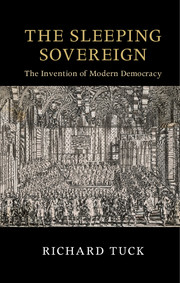4 - America
Published online by Cambridge University Press: 05 February 2016
Summary
In the aftermath of their revolution the American revolutionaries found themselves (almost, one might say, by accident) creating a constitutional structure which could most easily be theorised in the language I have been tracing throughout this book, though it was not until the first generation of post-revolutionary jurists that the language began actually to be employed. When the revolution began, the understanding of the participants was that the rebellious provinces of British North America had severally declared their independence and constituted themselves as independent states – indeed, it is precisely from 1776 that the term state began to be applied generally to each province. Though Massachusetts had styled itself, as it still does, a commonwealth in the early days of the settlement, by the eighteenth century the term seems to have been used much less and had been replaced by the legally correct name of province. After 1776 Massachusetts, Virginia and Pennsylvania chose to call themselves commonwealths rather than provinces, while the other provinces opted for the name of ‘state’. The binding of these states into a union initially took the form (under the Articles of Confederation) of a straightforward treaty in which it was expressly decreed that ‘Each state retains its sovereignty, freedom, and independence, and every Power, Jurisdiction, and right, which is not by this confederation expressly delegated to the United States, in Congress assembled’ (Article ii), and in which the ‘Confederacy’ was described as ‘a firm league of friendship’ (Article iii). The treaty was sent back to the states for ratification, and no procedure was specified for the process of ratification within each state, though the accompanying letter from the Congress asked that ‘the legislatures’ should be consulted. But in most cases the ratifying act was passed according to the usual local procedures by the state senate, or its equivalent, as well as the legislature, and was signed by the governor. So no fundamentally new constitutional forms had been created, and the United States of America might well have continued to be precisely analogous to the United Provinces of the Netherlands in their constitutional structure.
The theoretical innovations of this early period of the revolution instead took place at the state level.
- Type
- Chapter
- Information
- The Sleeping SovereignThe Invention of Modern Democracy, pp. 181 - 248Publisher: Cambridge University PressPrint publication year: 2016



